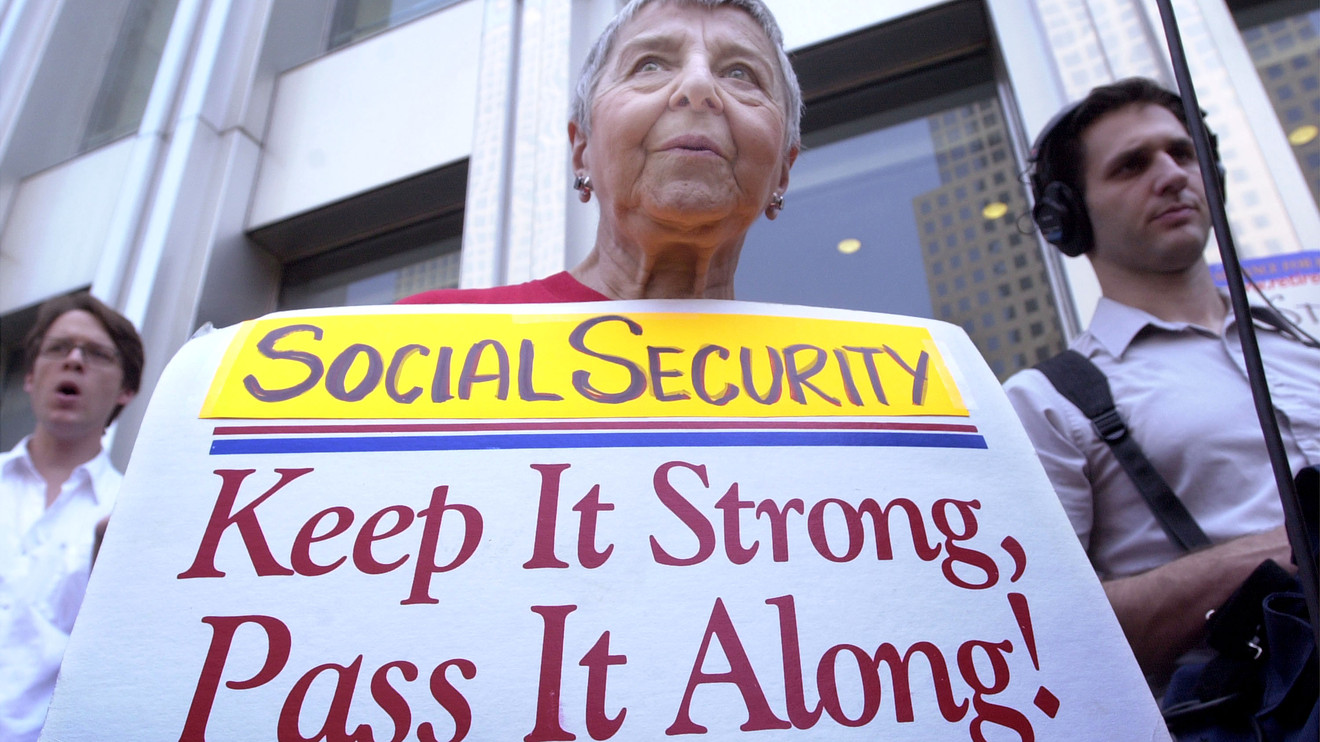
Social Security is fully funded for the next 15 years, and it’s mostly covered for the next 25 and 50 years too, according to the program’s trustees report released on Wednesday.
The Social Security Board of Trustees issue a report every year on the financial health of the program’s two trust funds that support benefits to retired, survivor and disabled beneficiaries. Last year, the trustees expected the reserves in those two funds would run out by 2035, a one-year delay from the year before. The report on Wednesday shows that expectation remains the same. (Social Security is supported by two trust funds — when they run out of money, the program will rely mainly on revenue from payroll taxes).
The program will be 91% funded for the next 25 years, 85% funded for the next 50 years and 82% funded for the next 75 years, according to the report. The figures are based on the two trust funds combined, although each is earmarked for specific purposes: one for the Old-Age & Survivors Insurance and one for Disability Insurance. Individually, the trustees project the reserves for OASI funds will be depleted in 2034 and the DI funds will be depleted in 2065.
Medicare’s trust fund for hospital care will be fully funded until 2026, an estimate that remains unchanged from the year before.
But there’s one major caveat in the 2020 report: it won’t account for the impact COVID-19 will have on the program.
See: Here comes the retirement crisis, coronavirus-style
In the near term, the agency has run business as usual. The coronavirus hasn’t deterred the Social Security Administration from sending out payments to current beneficiaries. The agency is still distributing benefits via direct deposit and mail during the pandemic, the Social Security Administration’s commissioner said in a statement earlier this year. Americans who claim Supplemental Security Income payments will also continue to receive their checks.
But the health crisis may negatively affect the program’s future stability. The long-term actuarial status of the trust funds depend on numerous factors, including fertility and mortality rates, immigration and disability, as well as the consumer-price index and wages.
The coronavirus has the potential to jolt all of these factors. The U.S. has seen record levels of unemployment in the last month because of nationwide lockdowns, and some workers who have not lost their jobs have suffered a reduction in earnings. There are more than 816,000 confirmed cases of the coronavirus in the U.S., and 44,000 deaths across the country, according to the Johns Hopkins’ Coronavirus Resource Center.
Unemployment or reduced hours and wages means less money taxed, and thus contributed to the program. Low fertility rates will eventually lead to fewer people in the workforce, creating an imbalance between the individuals paying into the system and those relying on it for benefits. Some workers may be forced into retirement earlier than expected because of shuttered businesses or sickness, in which case they may claim Social Security benefits earlier as a source of income.
The good news: Although COVID-19 may hurt Social Security, it won’t destroy it — the effects of the virus may not even make a huge dent in the projections. The estimate for the depletion of the trust funds may come sooner, but likely only by a year or so, said Nancy Altman, president of Social Security Works, which advocates for the expansion of the program. The shortfall in money needed versus had to pay out benefits might worsen, but only slightly, she added. “Even with what’s going on in the economy now, with such a large reserve the benefits will keep being paid and continued through the 2030s,” she said.
The trustees report gathers data over the last year, which means we won’t see the impact of the coronavirus on the program’s health until the report in 2021, said Dan Adcock, director of government relations and policy at the National Committee to Preserve Social Security and Medicare.
There’s more good news. The Disability Insurance trust fund has been on an upward trajectory for the last few years. Last year, the estimate was depletion in 2052, up from 2032 the year before. This year the projection is 2065. The increase is in response to fewer applications and benefit awards, which “remained at historically low levels for 2019,” the report said.
Experts are also watching out for the status of the trust fund specifically earmarked for disability benefits. For the last few years, there has been an uptick in the expected year the fund will be depleted, especially as fewer disability claims have been made, Altman said. Within two years, the projected depletion date went from 2032 (the estimate made in 2018) to 2052 (the estimate made in 2019). “The change in the reserve depletion year for DI is largely due to continuing favorable experience for DI applications and benefit awards,” the trustees said in 2019. The number of disability applications have decreased since 2010. The number of disabled-worker beneficiaries has also declined, since 2014.
Also see: I’m retired and claim Social Security — do I still get the $1,200 stimulus check?
If nothing was done to fix the program’s insolvency issue, Americans would still receive benefits — but it would be a reduction of what they’re owed.
The government has not made much progress in determining a fix for the insolvency issue. Social Security is often considered the “third rail” of politics, as discussions about solutions are often divisive. Some people think taxes must increase to pay for the program, while others suggest benefit cuts to future retirees. Public officials should see these projections as a testament to expand the program, not cut funding for it, Adcock said. Proposals have been made to bolster the program, such as the Social Security 2100 Act by Rep. John Larson (D-CT), Sen. Richard Blumenthal (D-CT) and Sen. Chris Van Hollen (D-MD).
“The last thing we should be doing is cutting benefits,” Adcock said.






